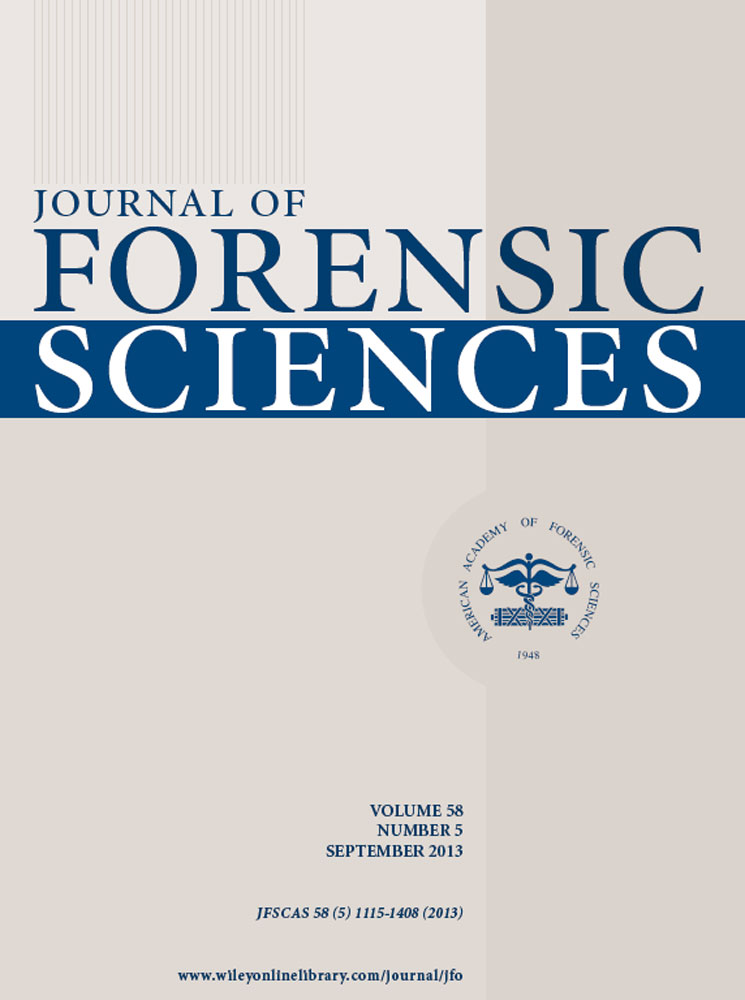Microscopic Analysis of Sharp Force Trauma in Bone and Cartilage: A Validation Study†,‡,§
Abstract
Sharp force trauma research lacks agreement on reported error rates for correctly identifying toolmark characteristics on bone and cartilage. This study provides error rates for determining blade class (serrated, partially serrated, nonserrated) and type of edge bevel (left, right, even). Three analysts examined cuts to a wax medium, cartilage, and bone using two types of microscopes. Additionally, the observers examined impressions taken from the wax medium and the cartilage. Overall, a total of 504 observations were performed. Serrated blades were distinguishable from nonserrated blades due to their patterned striations. Some difficulties were encountered in distinguishing serrated and partially serrated blades; however, when these groups were considered together as one classification type (serrated), classification accuracy improved from 79% to 96%. Classification accuracy for edge bevel was 65%. Error rates were similar when comparing direct observation of the cut marks versus indirect observation (impressions). Additionally, the type of microscope used did not affect error rates.




